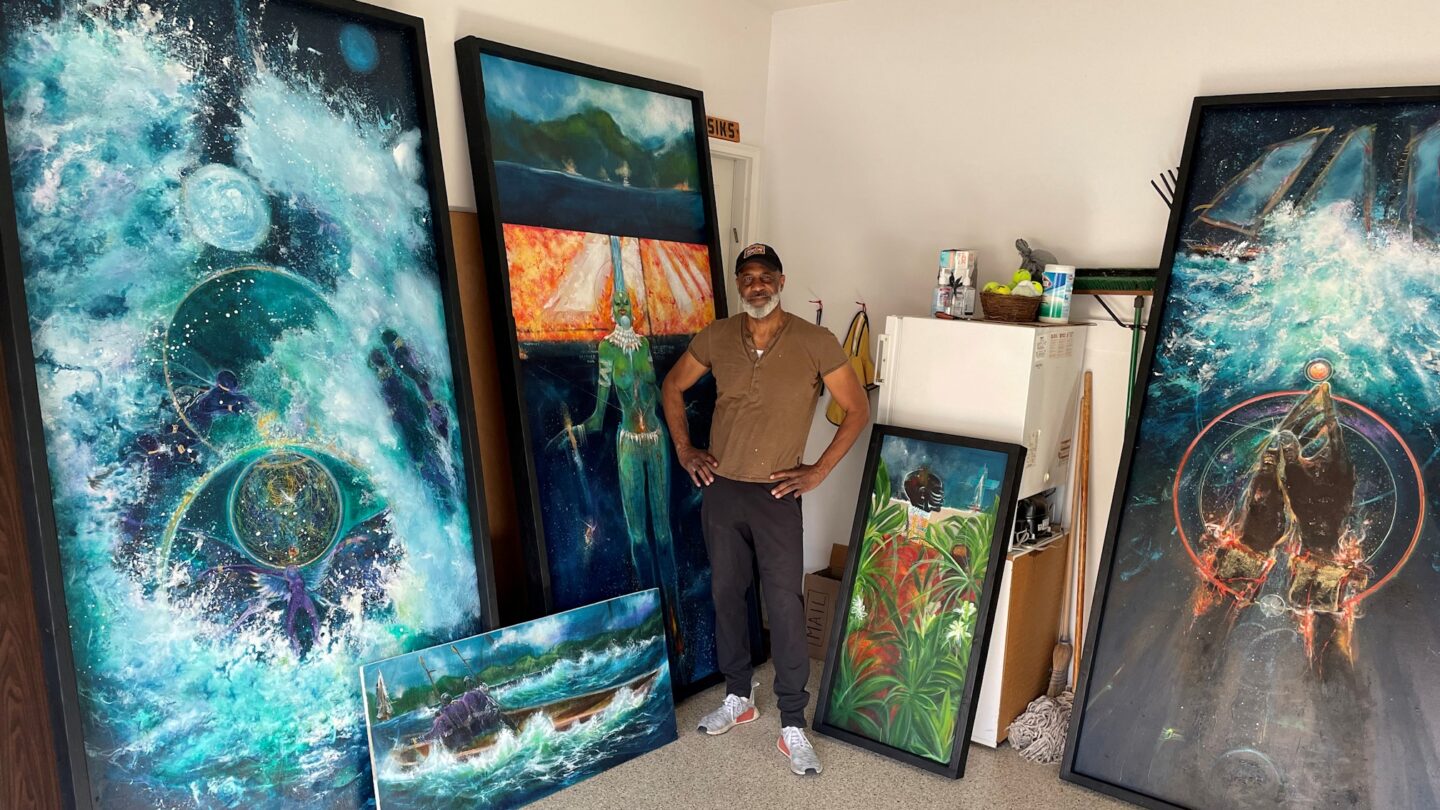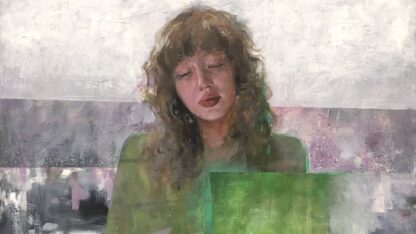Art exhibit 'Clotilda: The Final Journey' honors captives in the last slave ship voyage to the U.S.

Clotilda is the name of the last known U.S. slave ship, which brought 110 captives from Africa to Mobile, Alabama. This ship is the inspiration behind André Henderson’s new series of paintings, “Clotilda: The Final Journey.” The exhibition is sponsored by the City of Atlanta Mayor’s Office of Cultural Affairs, and is on view at Gallery 72 through Feb. 17.
André Henderson joined “City Lights” host Lois Reitzes via Zoom to talk about his series’ reflections on the Clotilda’s grim history.
Interview highlights:
An expansion on Henderson’s 2021 series, “The Journey:”
“The journey was the first part of the series that I created, actually, when I first moved to Atlanta, and that series of paintings is an honoring of all of the captured Africans that were captured for the slave trade,” explained Henderson. “But it also gives a look into the historical context of what actually happened during that period of time. For instance, some pieces have dates – 1619, 1831, 1776, and so forth – that will have the viewer questioning what those dates are, and will have to look back and see historically what happened on those particular dates.”
“Both of the series are actually up at Gallery 72. ‘The Journey’ is in one gallery, and the ‘Clotilda’ is in the corridor next door. So it’s an experience in which you’ll go see ‘The Journey’ first, and then you’ll go across the corridor and experience the ‘Clotilda,’ which I called ‘The Final Journey’ because it was the last slave ship to touch American shores in 1860, with 110 captured Africans while slavery was illegal. So… in my research, I found a lot of things that were written, but I didn’t see that there was anything painted to honor those Africans that were actually on that ship. And I might add, too, that the descendants from that ship went on to also form Africatown in Alabama.”
A ship in business despite the already outlawed slave trade:
“[Slavery] was illegal at that time, and a gentleman by the name of Captain William Foster and Timothy Meaher made a gentleman’s bet. The captain bet Timothy Meaher that he could; although trafficking and Slavery was illegal in the United States at that particular time, he made a bet that he could still go back to Africa and bring back captured Africans,” recounted Henderson. “He did, in the region of Benin, Africa, and he brought them back in 45 days, and there were 110 of them in the most unbelievable conditions in space that that particular ship had.”
Two paintings showing Africans hiding and watching:
“One is a woman and child, and the second… is a male figure. That [first] painting is ‘Yemaya’s Deliverance,’ and there’s a descriptive of it about her actually looking at the ship that had already captured her people and is looking at the ship as it begins to pull away from the ocean side. And the description for that piece is ‘The goddess of Yoruba, when her people were taken from their shores, Yemaya went with them, providing solace as they endured the violations of this illicit and forbidden journey,'” Henderson said.
“The gentleman, or her husband behind, not only is he looking over his shoulder, but he’s looking to make sure nobody else is coming. And he also, in that picture, is depicted with a spear for his own defense. So as a tribesman, he is there as a defensive person as well. And so I wanted to show that, but not only of his stature, but in his gaze, and the look in his eye where you can actually feel him really looking at you intently.”
On the painting “Ascension,” a depiction of an underwater angel:
“That is actually the glue, if I may say, of all the pieces within this particular series. That is the mythical, spiritual context of the ancestors and the celestial bodies that surround them, and it also involves storytelling. If you look closely at that picture, you’ll see a number of different images. The more you look, the more you discover. That’s why I love these pieces because you’ll see a male and female, you’ll see angels, you’ll see stars and celestial beings, and you’ll see oceans, and all different types of things you’ll discover,” Henderson said. “It’s what I envision – that although they were captured, these things and these items and these people, these energies were still with them, the ones that were on the ship.”
André Henderson’s painting series “The Journey” and “Clotilda: The Final Journey” are on view at Gallery 72 through Feb. 17. More information is available at https://www.ocaatlanta.com/?programs=gallery-72-2-2








